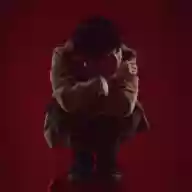Songs of Studio Ghibli: List of Theme Songs, Insert Songs, and BGM from Ghibli Music
Studio Ghibli films, enjoyed by both adults and children, are also famous for their wonderful music.
Every work features songs that perfectly fit the story and leave an unforgettable impression after just one listen.
We’ve gathered not only the popular theme songs and insert songs from Studio Ghibli works, but also image songs that bring back memories of famous scenes and evocative moments.
If you want to listen to Ghibli’s masterpieces or hear again the song that played in that one scene, be sure to check these out!
- [Ghibli’s Famous Songs Medley] The soothing world of Studio Ghibli that resonates with the heart
- [Karaoke] Sing! A Collection of Ghibli Classics
- Songs from Kiki's Delivery Service. Anime theme and insert songs. Ghibli classics.
- Ghibli’s famous BGM. Recommended masterpieces and popular tracks for work and study BGM.
- Popular Ghibli Songs Ranking [2025]
- Songs from Nausicaä of the Valley of the Wind. Main theme and insert songs.
- Song(s) from Princess Mononoke. Theme song and insert song(s).
- [From Kids to Adults] A Collection of Easy-to-Sing Ghibli Songs
- Songs from Howl's Moving Castle: theme song and insert songs
- Songs from Frozen. List of Frozen’s main theme song and insert songs.
- Recommended anime theme songs for children: timeless anime song classics you should listen to at least once.
- Songs from Castle in the Sky (Laputa): the theme song and insert songs.
- Popular anime songs you often hear on YouTube Shorts
Princess Mononoke (1–10)
Vengeful SpiritJoe Hisaishi

This is the piece used in the scene where the Tatari-gami appears in Princess Mononoke.
It’s a track that exudes intense tension and a frightening atmosphere.
Some people might even find themselves glancing around when they listen to it (haha).
That’s how impactful and memorable this piece is.
KodamasJoe Hisaishi

This piece accompanies an early scene in the story set in the forest, where the Kodama—forest spirits that only appear in rich, thriving woods—make their appearance.
These characters are indispensable when speaking about Princess Mononoke, and naturally a piano with a warm, woody timbre suits the track perfectly.
It’s a whimsical and charming arrangement that almost lets you hear the Kodama’s rattling “kara-kara-kara” sound.
Ashitaka DiaryJoe Hisaishi

This is “The Legend of Ashitaka” from Studio Ghibli’s feature-length animated film Princess Mononoke, a work that stands proudly as a heavy and grand orchestral piece in its own right.
Studio Ghibli began as a feature animation production company with the release of Nausicaä of the Valley of the Wind on March 11, 1984, and Princess Mononoke is its tenth film.
It is also known for elevating animation from something consumed solely by fans to a form of “art.” The production scale was immense, and from around this time, more recordings featured live orchestral performances.
Listening to the music, it is not merely background accompaniment for animation but sounds like a worthy new classical work in its own right.
The orchestral performance was by the Tokyo City Philharmonic Orchestra, and this was also the first time a permanent professional orchestra, rather than an ad hoc ensemble, was employed.
Princess Mononoke (Instrumental Version)Joe Hisaishi

This song made the biggest impact when it was released as the ending theme of Princess Mononoke.
Yoshikazu Mera’s beautiful high-tone vocals moved listeners around the world.
Its familiar melody enhances the film’s world and sense of presence, and after the emotional experience of the movie, it carries us further into its lingering afterglow.
Since its 1998 release, it has remained a timeless classic no matter how many times we listen.
The Two in the Forest of the Deer GodJoe Hisaishi

From the very beginning, the delicate piano phrases reach your ears—a creepy track that inspires fear and sets your heart racing.
Yet those high notes even evoke the presence of a god.
The piece is themed around the Forest Spirit’s forest, the climactic setting in Princess Mononoke, and it captures that atmosphere perfectly.
In the latter half, the melody of “Mononoke-tachi Dake” makes an appearance.
Princess Mononoke (11–20)
ShuraJoe Hisaishi

The era of Princess Mononoke was one of constant conflict, where negotiations between people were carried out through violence and warfare.
Even within a film set against such a backdrop, many memorable battles are depicted, and this piece was used in those battle scenes.
It’s a tense track that seems to reveal the resolve of people and creatures who risk their lives to fight.
The arrangement makes it feel as if you can hear your own heartbeat at any moment.
Whisper of the Heart (11–20)
A straightforward song that portrays the pursuit of dreams.
Studio Ghibli’s “Whisper of the Heart” portrays a boy and girl’s love story while depicting how they each confront their future. The soundtrack is as straightforward and refreshing as the film itself, making it a great fit for any scene! Be sure to give it a listen. Related articles:Songs from Whisper of the Heart: theme song and insert songs
Whisper of the Heart (1–10)
Country RoadYoko Honna

It is both the ending theme and the main theme of “Whisper of the Heart.” The original song is John Denver’s “Take Me Home, Country Roads,” which also serves as the film’s opening theme.
In the story, it is established that the protagonist, Shizuku, wrote these Japanese lyrics, and the encounters that occur during the process of creating them set the story in motion.
For these reasons, this song can be considered a key element within the work.






